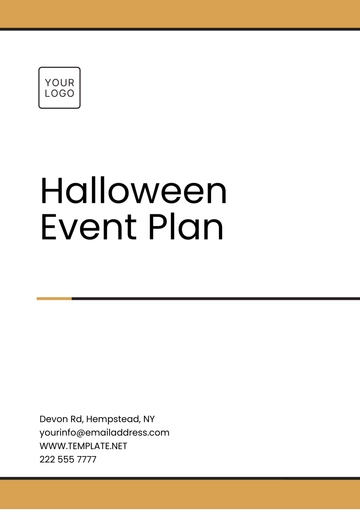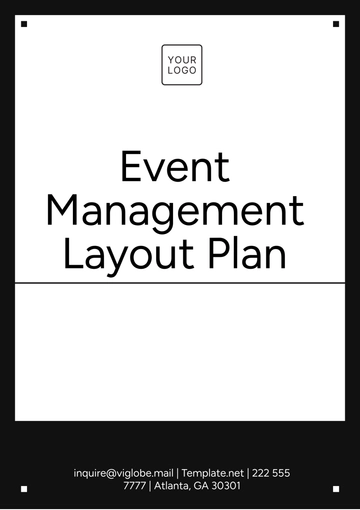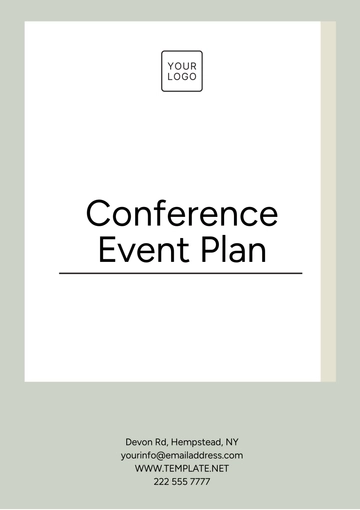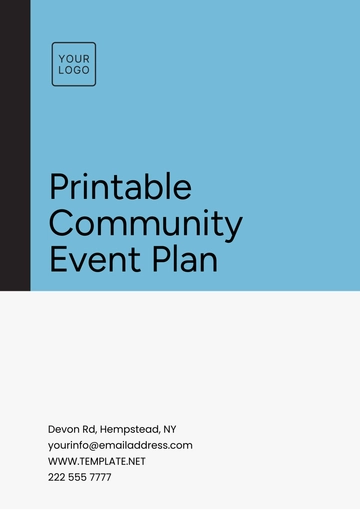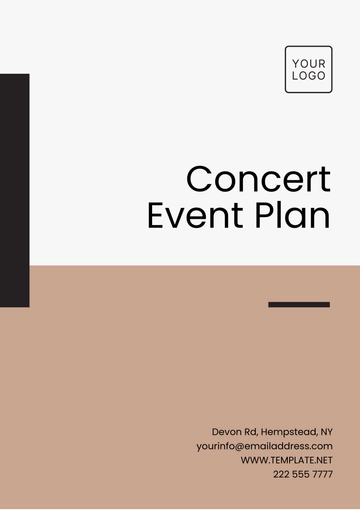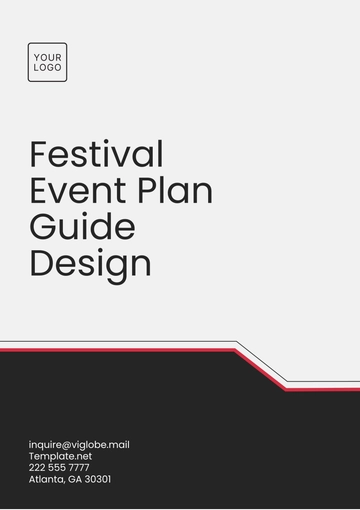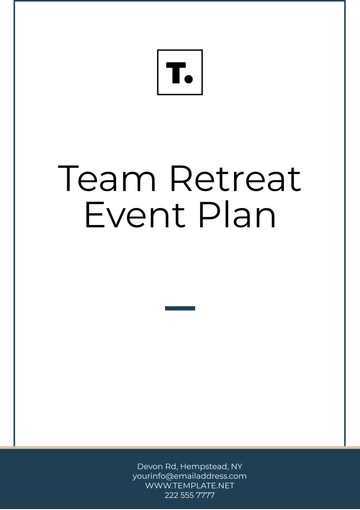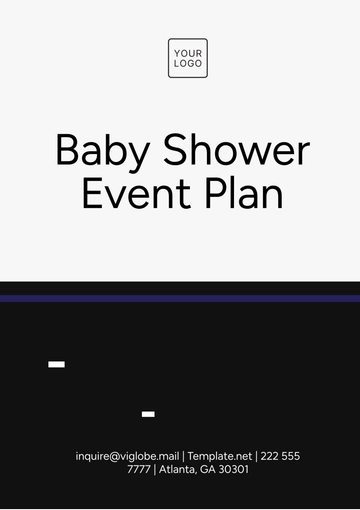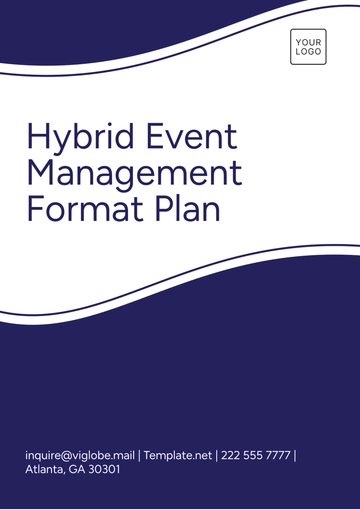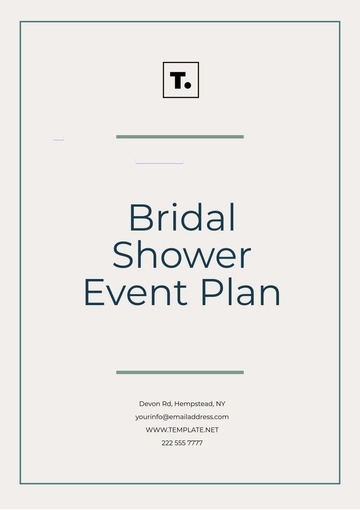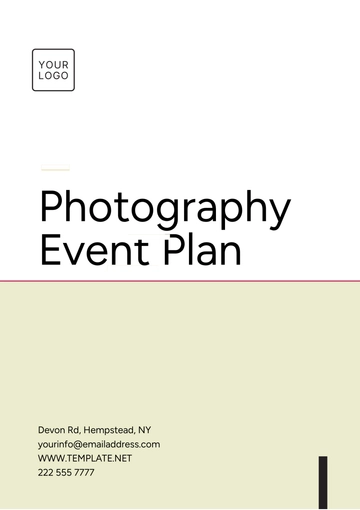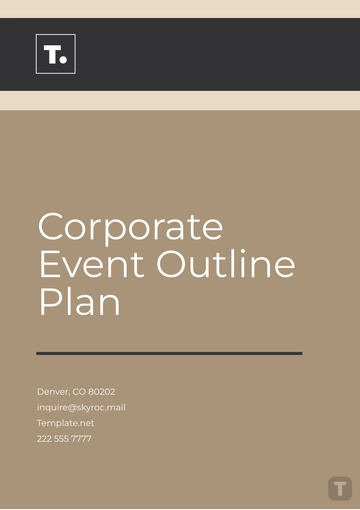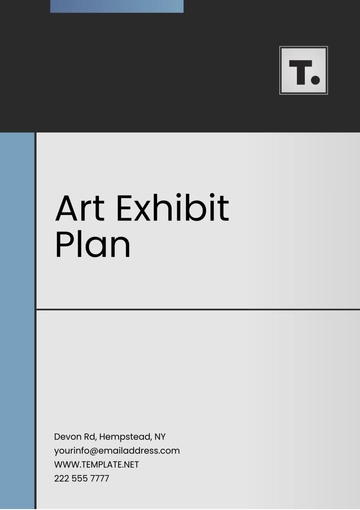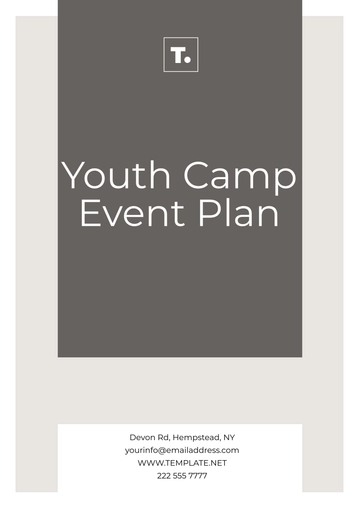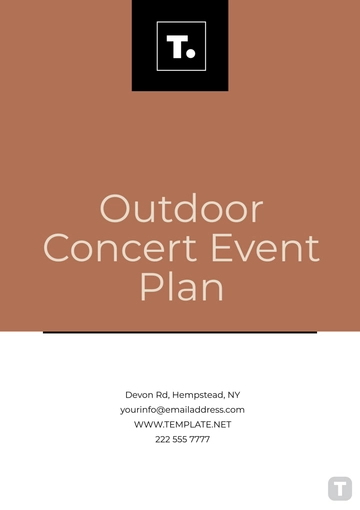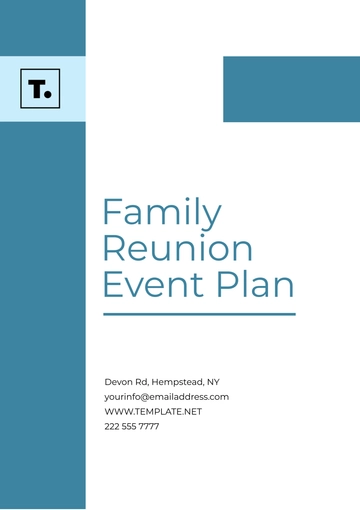Free Art Exhibit Plan
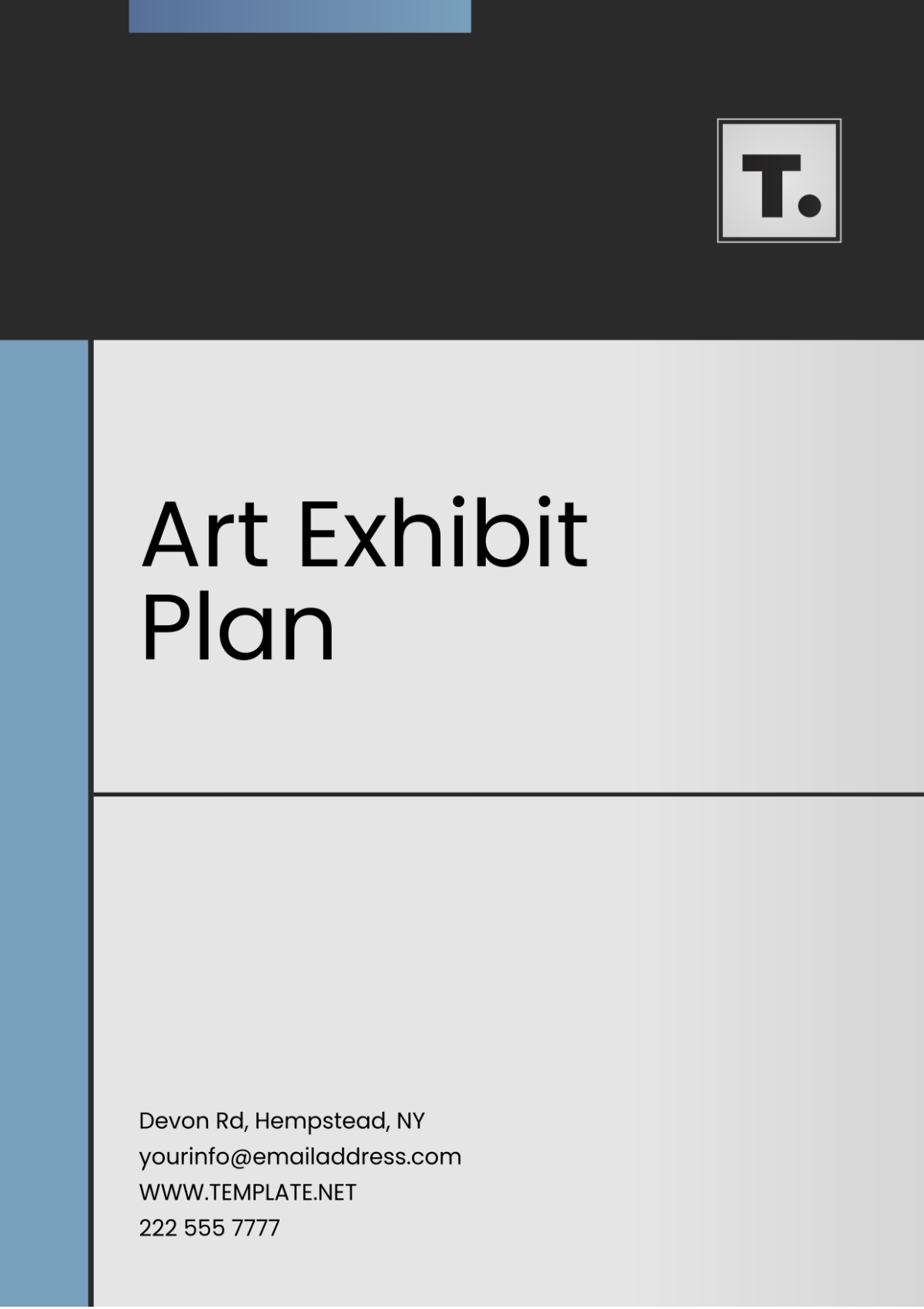
I. Introduction
This document outlines a detailed plan for hosting an art exhibit, guiding you through each step of the process, from concept development to post-exhibit evaluation. The aim is to provide clear instructions, best practices, and resources necessary for executing a successful and impactful exhibit.
II. Concept Development
A. Theme Selection
Identify a Cohesive Theme
Select a unifying theme that resonates with the target audience and conveys a specific message or emotion. Consider factors such as current social issues, cultural trends, or historical references that can enrich the viewer's experience.Target Audience Analysis
Define the target audience demographics to tailor the theme effectively. Understanding their interests and preferences will guide the selection of artworks and marketing strategies.
B. Artist Collaboration
Research and Outreach
Identify and reach out to artists whose work aligns with the chosen theme. Use platforms such as social media, art fairs, and galleries to find potential collaborators.Concept Discussion
Host initial meetings to discuss the exhibit concept, exploring how each artist's work fits into the overall narrative. Encourage artists to share their interpretations of the theme and suggest potential artworks for inclusion.
III. Planning and Preparation
A. Venue Selection
Criteria for Selection
Choose a venue that accommodates the artworks and anticipated guests. Consider location, size, accessibility, lighting, and amenities such as restrooms and parking.Site Visit
Conduct a site visit to assess the space and envision the layout. Consider potential challenges and how to address them during installation.
B. Budgeting
Detailed Budget Breakdown
Create a comprehensive budget covering all aspects of the exhibit, including:Venue Rental
Marketing and Promotion
Art Transportation and Insurance
Artist Fees
Miscellaneous Expenses (refreshments, equipment rentals, etc.)
Funding Sources
Identify potential funding sources such as grants, sponsorships, and ticket sales to support the budget.
C. Timeline Creation
Establish Key Milestones
Develop a timeline with specific deadlines for each phase of planning, ensuring all team members are aligned.
Task | Deadline |
|---|---|
Theme and Artist Selection | Two Months Prior |
Venue Booking | Six Weeks Prior |
Marketing Campaign Launch | One Month Prior |
Installation | One Week Prior |
Opening Event | Day of Exhibit |
Visitor Feedback Collection | Immediately Post-Event |
Post-Exhibit Analysis | Two Weeks Post-Event |
IV. Execution
A. Installation
Art Placement
Coordinate the installation of art pieces in the venue. Pay attention to the flow of the space and the interaction between artworks to ensure an optimal presentation.Safety and Security
Implement measures to ensure the safety of the artworks during installation and throughout the exhibit, including proper display methods and security personnel.
B. Marketing and Promotion
Marketing Strategy
Execute a marketing campaign that encompasses social media, local press, newsletters, and community events. Utilize visuals and artist stories to attract interest.Engagement Initiatives
Provide sneak peeks and behind-the-scenes content to engage the audience before the opening. Consider hosting pre-exhibit events or artist Q&As.
C. Opening Event
Event Planning
Plan a memorable opening event, incorporating elements such as artist talks, guided tours, or a reception to foster engagement and media coverage.Logistics Management
Coordinate logistics for the event, including catering, seating arrangements, and audiovisual equipment to enhance the attendee experience.
V. Evaluation and Feedback
A. Visitor Feedback
Feedback Collection
Gather visitor feedback through surveys, comment cards, or informal discussions. Assess the overall experience, artwork resonance, and any suggestions for improvement.
B. Artist and Stakeholder Debrief
Conduct Debrief Sessions
Host debrief sessions with artists and stakeholders to gather insights about the collaboration, the exhibit’s success, and areas for enhancement in future projects.
C. Post-Exhibit Analysis
Data Analysis
Analyze visitor feedback, attendance figures, and financial data to evaluate the exhibit's success against the initial goals. Identify patterns or trends that can inform future exhibits.Documentation of Findings
Document findings and lessons learned for future reference, creating a resource for subsequent exhibit planning.
- 100% Customizable, free editor
- Access 1 Million+ Templates, photo’s & graphics
- Download or share as a template
- Click and replace photos, graphics, text, backgrounds
- Resize, crop, AI write & more
- Access advanced editor
Unlock your creativity with the Art Exhibit Plan Templates from Template.net. These editable and customizable templates streamline your planning process, allowing you to showcase your artistic vision effortlessly. Easily modify layouts and details using our AI Editor Tool, ensuring a polished presentation that captures the essence of your exhibit. Start designing your masterpiece today!
You may also like
- Finance Plan
- Construction Plan
- Sales Plan
- Development Plan
- Career Plan
- Budget Plan
- HR Plan
- Education Plan
- Transition Plan
- Work Plan
- Training Plan
- Communication Plan
- Operation Plan
- Health And Safety Plan
- Strategy Plan
- Professional Development Plan
- Advertising Plan
- Risk Management Plan
- Restaurant Plan
- School Plan
- Nursing Home Patient Care Plan
- Nursing Care Plan
- Plan Event
- Startup Plan
- Social Media Plan
- Staffing Plan
- Annual Plan
- Content Plan
- Payment Plan
- Implementation Plan
- Hotel Plan
- Workout Plan
- Accounting Plan
- Campaign Plan
- Essay Plan
- 30 60 90 Day Plan
- Research Plan
- Recruitment Plan
- 90 Day Plan
- Quarterly Plan
- Emergency Plan
- 5 Year Plan
- Gym Plan
- Personal Plan
- IT and Software Plan
- Treatment Plan
- Real Estate Plan
- Law Firm Plan
- Healthcare Plan
- Improvement Plan
- Media Plan
- 5 Year Business Plan
- Learning Plan
- Marketing Campaign Plan
- Travel Agency Plan
- Cleaning Services Plan
- Interior Design Plan
- Performance Plan
- PR Plan
- Birth Plan
- Life Plan
- SEO Plan
- Disaster Recovery Plan
- Continuity Plan
- Launch Plan
- Legal Plan
- Behavior Plan
- Performance Improvement Plan
- Salon Plan
- Security Plan
- Security Management Plan
- Employee Development Plan
- Quality Plan
- Service Improvement Plan
- Growth Plan
- Incident Response Plan
- Basketball Plan
- Emergency Action Plan
- Product Launch Plan
- Spa Plan
- Employee Training Plan
- Data Analysis Plan
- Employee Action Plan
- Territory Plan
- Audit Plan
- Classroom Plan
- Activity Plan
- Parenting Plan
- Care Plan
- Project Execution Plan
- Exercise Plan
- Internship Plan
- Software Development Plan
- Continuous Improvement Plan
- Leave Plan
- 90 Day Sales Plan
- Advertising Agency Plan
- Employee Transition Plan
- Smart Action Plan
- Workplace Safety Plan
- Behavior Change Plan
- Contingency Plan
- Continuity of Operations Plan
- Health Plan
- Quality Control Plan
- Self Plan
- Sports Development Plan
- Change Management Plan
- Ecommerce Plan
- Personal Financial Plan
- Process Improvement Plan
- 30-60-90 Day Sales Plan
- Crisis Management Plan
- Engagement Plan
- Execution Plan
- Pandemic Plan
- Quality Assurance Plan
- Service Continuity Plan
- Agile Project Plan
- Fundraising Plan
- Job Transition Plan
- Asset Maintenance Plan
- Maintenance Plan
- Software Test Plan
- Staff Training and Development Plan
- 3 Year Plan
- Brand Activation Plan
- Release Plan
- Resource Plan
- Risk Mitigation Plan
- Teacher Plan
- 30 60 90 Day Plan for New Manager
- Food Safety Plan
- Food Truck Plan
- Hiring Plan
- Quality Management Plan
- Wellness Plan
- Behavior Intervention Plan
- Bonus Plan
- Investment Plan
- Maternity Leave Plan
- Pandemic Response Plan
- Succession Planning
- Coaching Plan
- Configuration Management Plan
- Remote Work Plan
- Self Care Plan
- Teaching Plan
- 100-Day Plan
- HACCP Plan
- Student Plan
- Sustainability Plan
- 30 60 90 Day Plan for Interview
- Access Plan
- Site Specific Safety Plan

